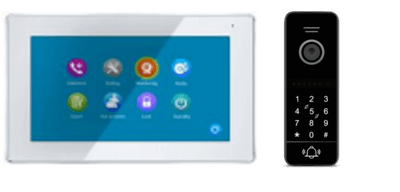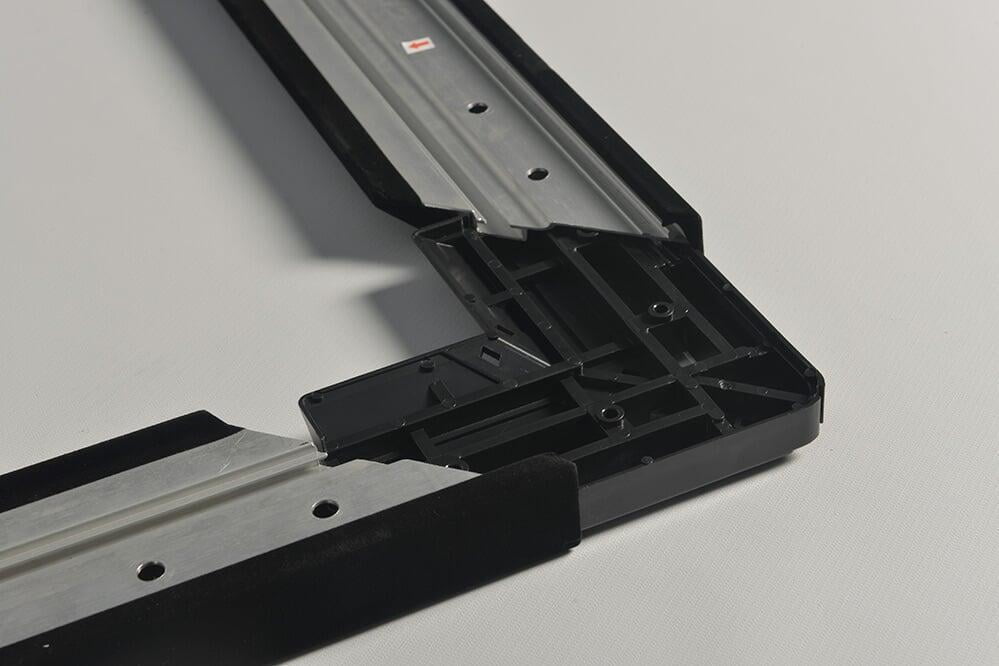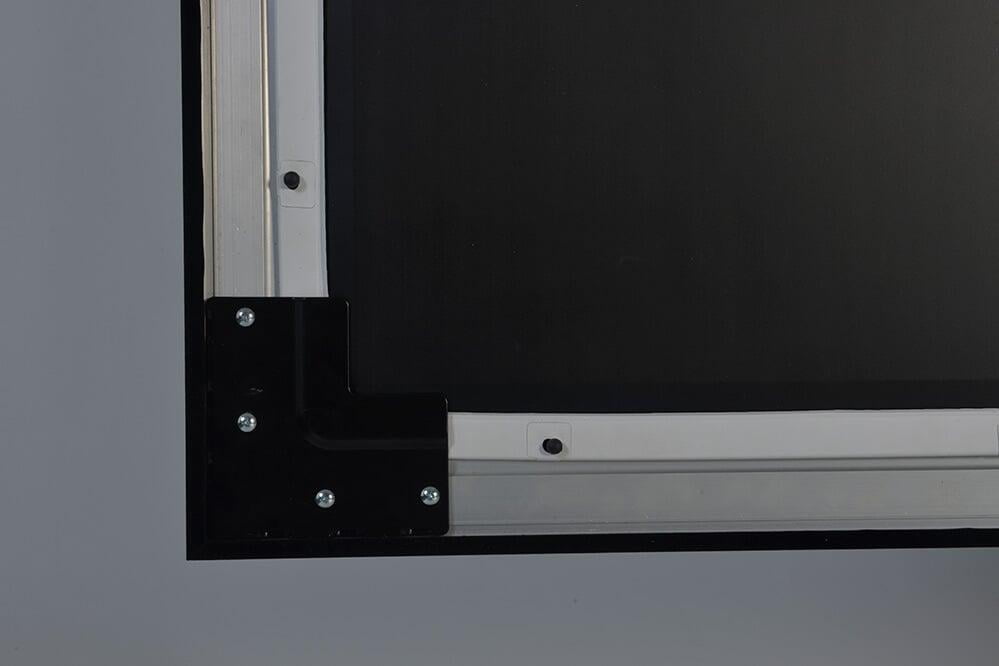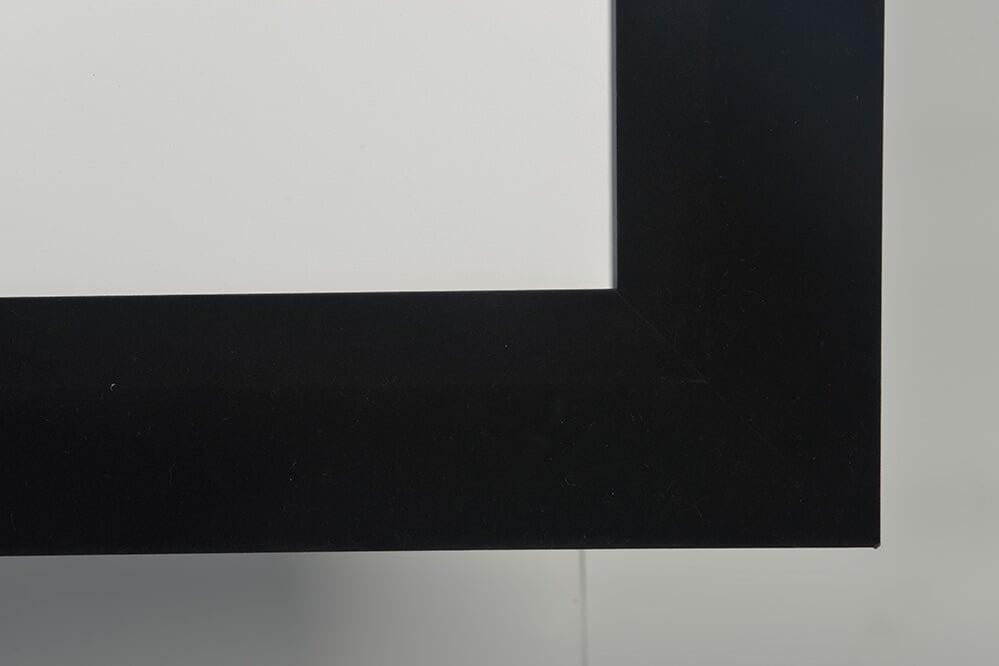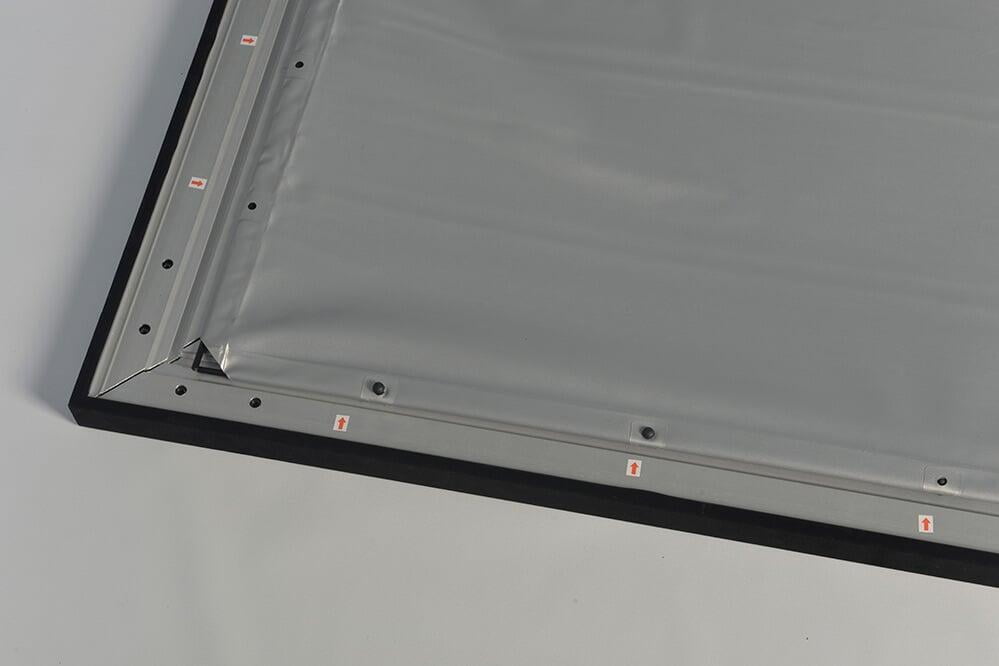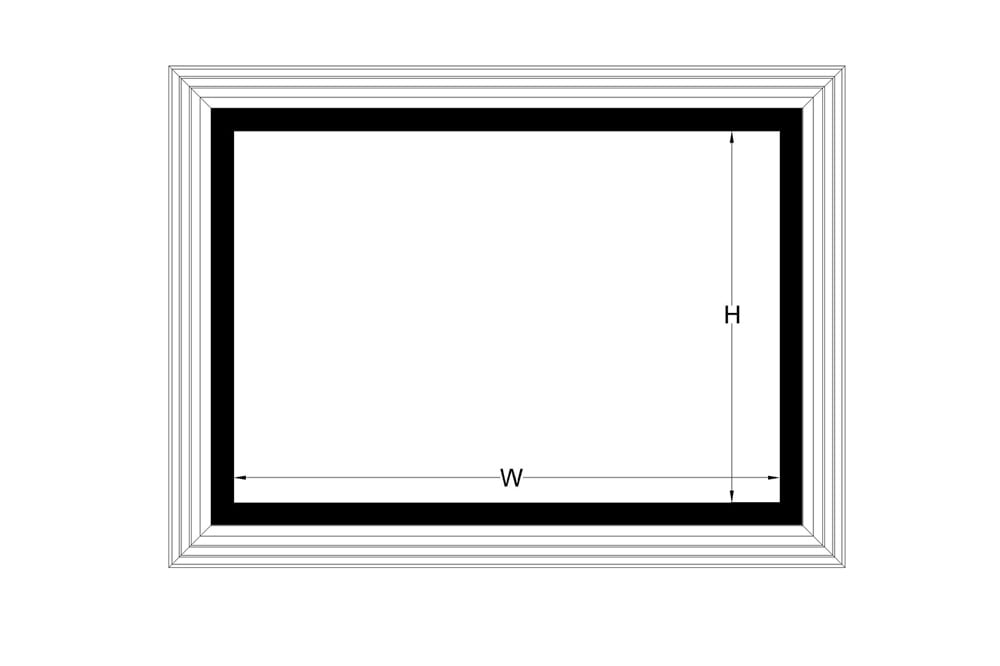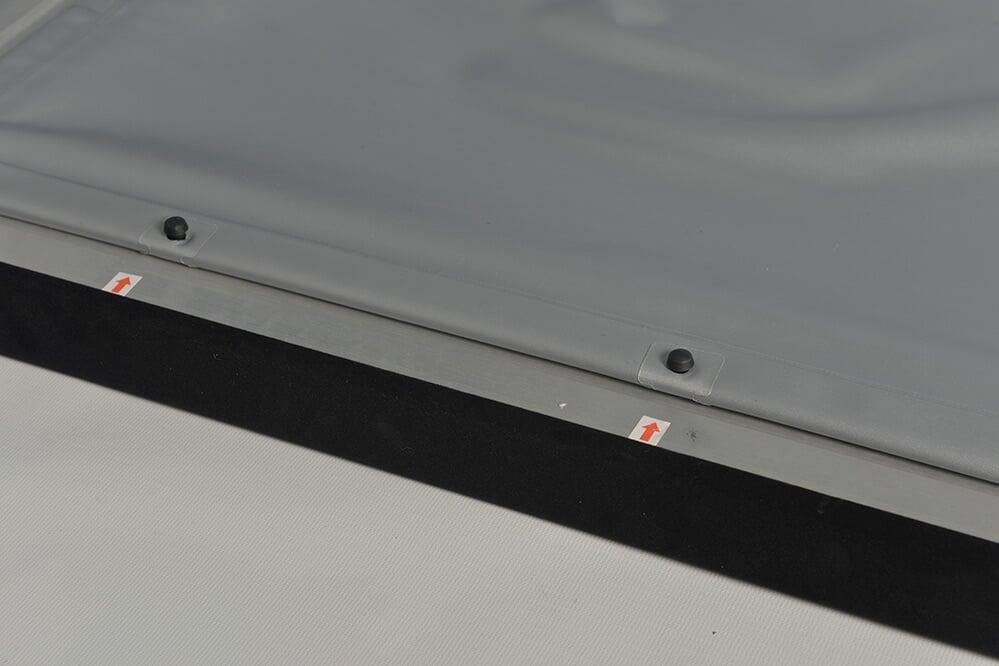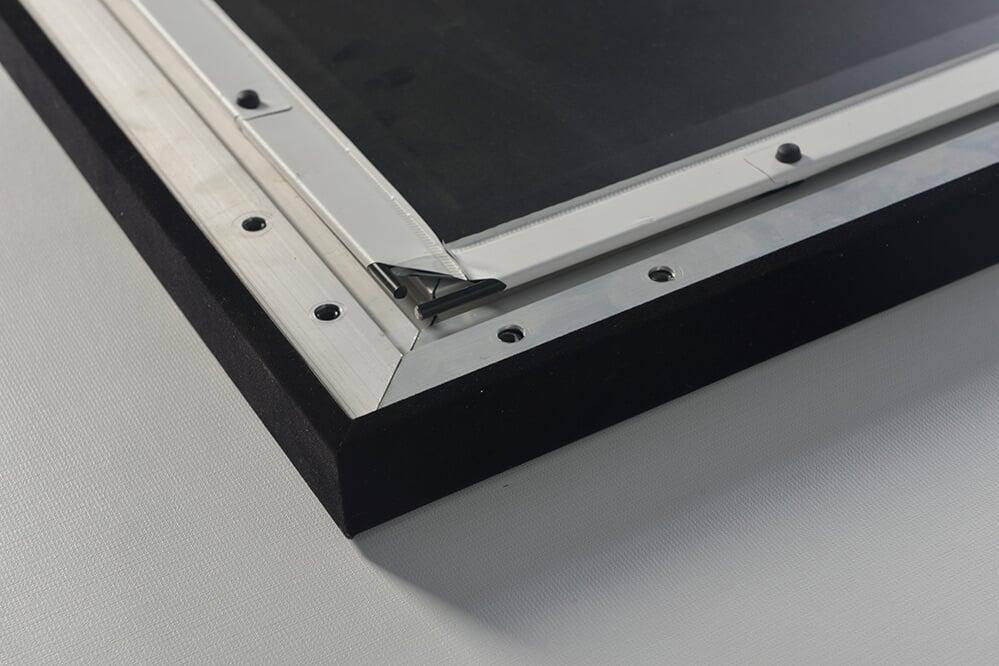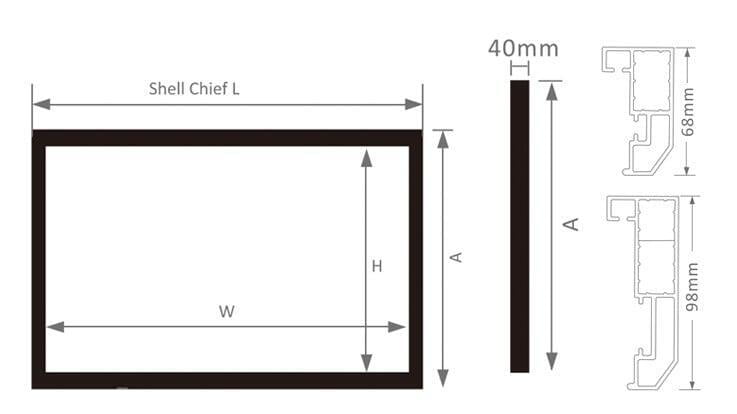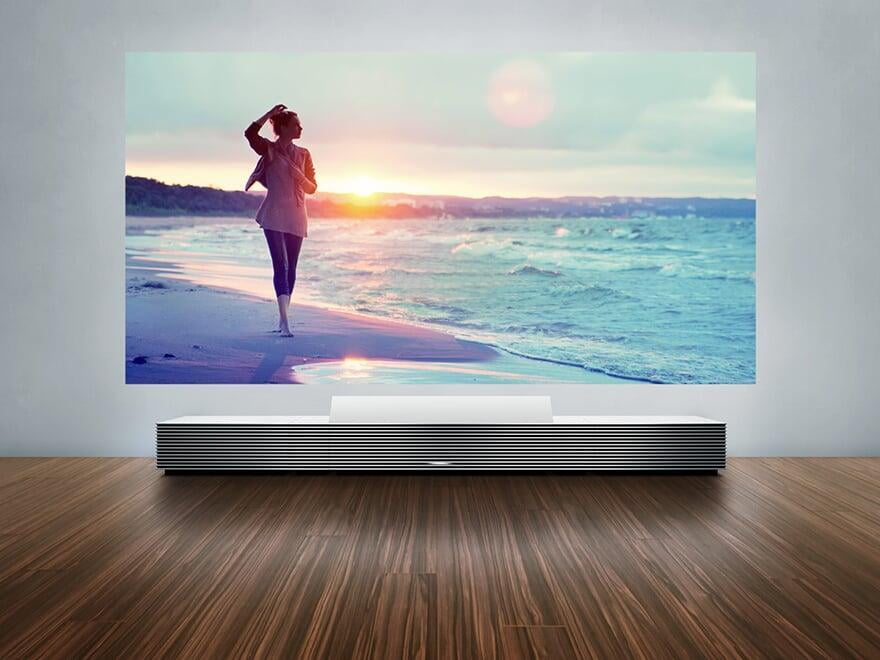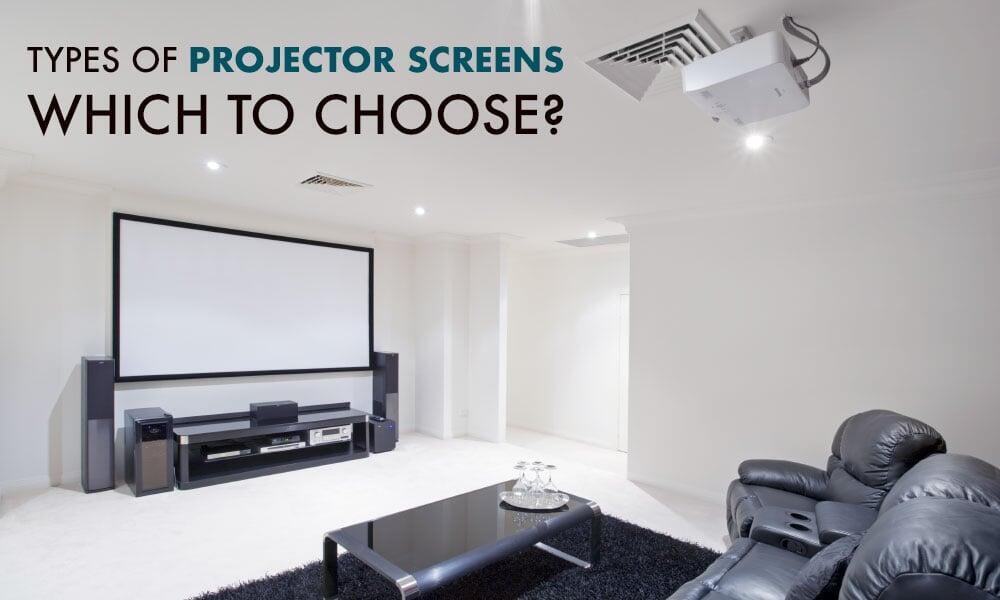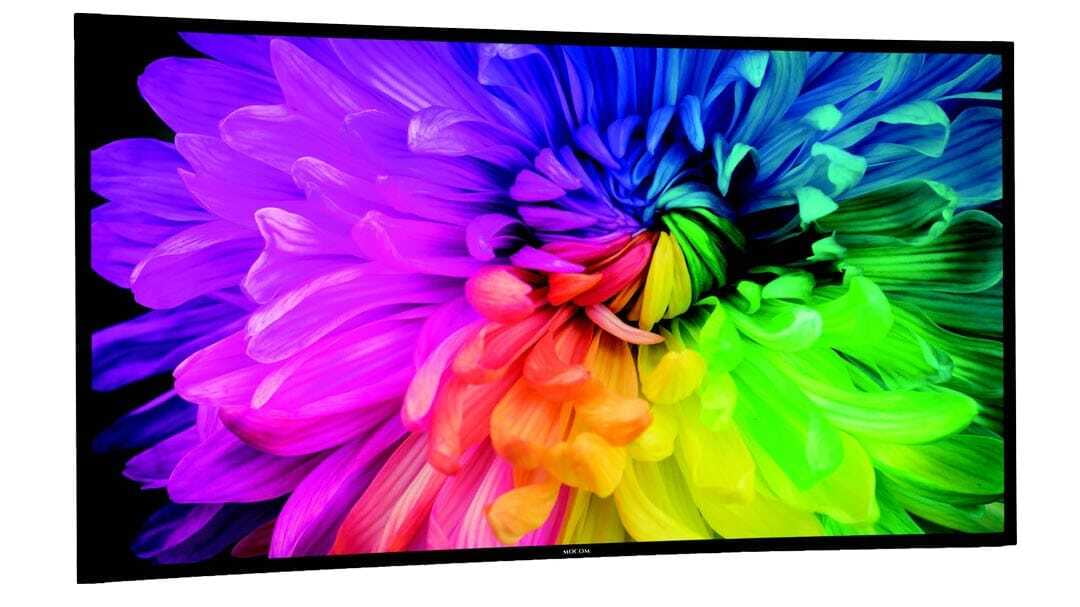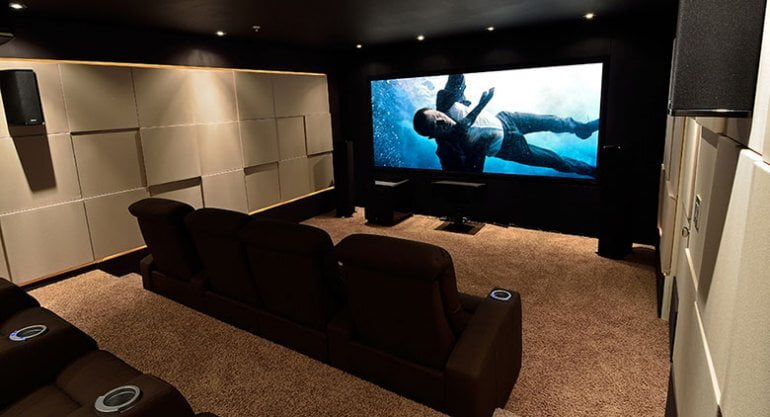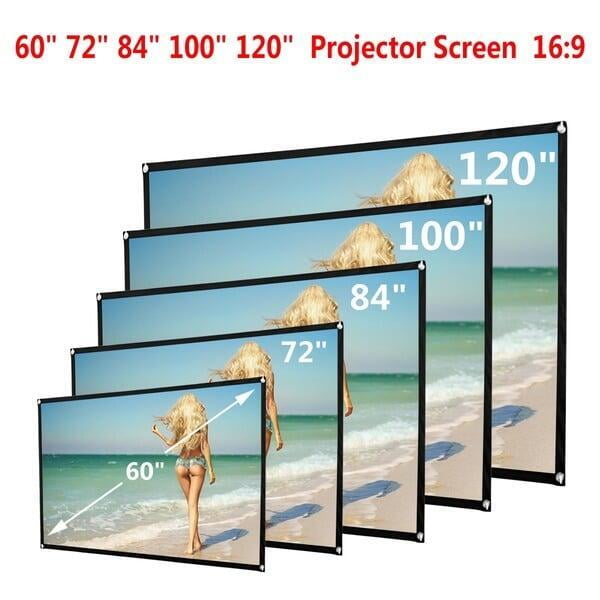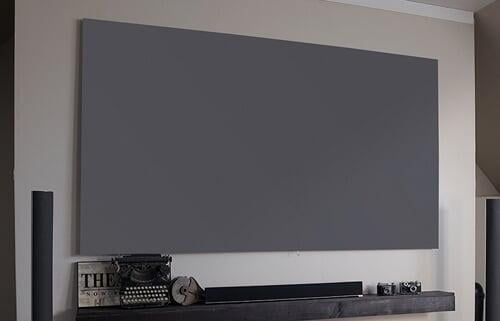These screens have been developed with extreme high quality but still at a reasonable and very affordable price.
A new triple layered, fine grain emulsion has been developed giving unparalleled image production with a 1:1.1 screen gain. Perfect for modern projectors. With a pure black flocked velour frame, these screens exude luxury and quality throughout.
Specially designed to be easy to assemble and mount you can be up and running in less than an hour and enjoy 4K, Full HD and 3D movies as they were meant to be seen.
See for yourself and audition this wonderful product in showrooms around Australia.
The easy to use mounting system allows for the screen to be mounted flush to the wall making for a very professional finish.
Compatible with places needing high-precision and fixed installation, for instance, professional family theaters, scientific research institutions, government organizations, command centers, convention and entertainment venues of enterprises, etc.
Please Note: We have elected to supply and ship these in the half screens for several reason - they take no longer to assemble, the finish remains the same but the ability to transport in a van or car is now possible in all lengths and the required storage space is much less. As per the pictures, the added bonus is that we now have an included centre support making the screens even more rigid!
Can I use a plain wall instead of a screen?
In order to increase portability and decrease the immediate cost, some customers opt to project their image onto a plain wall or white sheet instead of purchasing a professional projector screen. Using a wall will definitely still get you an image but image quality will never be as good as when a good quality projection screen is used. Painted walls, even if painted white, will not match the colour reproduction, brightness efficiency, and overall image quality of a good quality projector screen
Roller Screens (Pull Down & Motorised)
Roller screens are better for general activity areas where the screen can roll down for use and disappear when not in use. Roller or Pull Down screens are the most popular style of screen as they take up little room and can be transported if required. Pull down screens are often considerably cheaper than other screen types too. Roller screens can be purchased as a manual pull down, or motorised, often including a remote control to raise and lower and screen surface on demand. Motorised screens are handy for corporate meeting rooms and at home.
Fixed Frame Screens
Fixed Framed screens are generally better for dedicated viewing areas. These screens do not roll away, they are a permanent fixture in the room like a picture frame on the wall. As the fixed frame screen does not roll the material, the life is generally a little longer, with less stretching over time. The downside to this type of screen is the material is always on show and therefore can become dirty overtime if people, touch the surface.
Fixed frame screens are most popular in Home Theatre setups.
Tripod projector screen / Pull Up Projector Screen
The 2 most common types of portable screens are the 'Tripod' and the 'Pull Up'. The tripod style is generally heavier than the pull ups but often much cheaper. The Pull up type is usually easier and quicker to setup as there are not tripod stands to set up first... they just pull up from the ground with a vertical rod at the back to keep the screen upright.
As a rough guide for a group of up to 6 you can use the micro portable screens that are like a pull up style but sit on a desk and are about the size of a TV at 40inches when extended. For 15-20 people we would go for something around 60 inches diagonal. And for larger groups of 30-80 people the larger tripods between 80-120inches. Whilst most people consider a larger screen to be better you also have to consider the larger screens are going to be more difficult to transport (try fitting a 2.4m long screen into your car and you will see what I mean).
What is an 'Aspect Ratio' what what type should I use?
The Aspect Ratio is basically the shape of the projection, all projectors, Televisions, and computer monitors have an Aspect Ratio. There are 3 Aspect Ratio's commonly used, 4:3 (which is more square), 16:9 and 16:10 (which are both widescreen formats).
We normally recommend matching the ratio of the screen to the projector you are using. If you have a SVGA or XGA resolution projector, that would be a 4:3 ratio so best to use a 4:3 screen. If you have a WXGA resolution projector, that would be 16:10 so best to use a 16:10 screen. For home theatre 16:9 is more common as this is what the home theatre grade projectors use.
Does size matter ?
With projection screens, definitely. However, bigger is not necessarily better. Ever wondered why the last seats to fill in a cinema are the ones at the front? This is because the screen is too big for the viewing distance. When determining the correct screen size, we must consider the minimum viewing distance and the maximum viewing distance . In other words, what is the best screen size for your room?
The minimum viewing distance is the closest distance to the screen one can sit before losing the ability to see the picture as a whole. Once a person is closer than this, the human eye cannot capture the whole picture - the eye can only focus on a part and will have to continuously scan the screen to read the entire image.
Viewing Distances
The minimum viewing distance we recommend is 1.5 x the width of the screen
(so for a 2m wide picture, the closest we recommend to sit would be 3m).
The maximum viewing distance is not as vital but you obviously don't want to sit so far back that you lose the cinema experience..
The maximum viewing distance we recommend is 4 x the width of the screen .
Remember, the biggest screen won't necessarily give you the best result. Most customers will not require a screen size more than 2.2m wide. The last thing you want with your new home theatre set up is to feel sea sick or have a headache when trying to watch a movie.
Are there different screen materials? Which one is best?
Front projection screens have been offered in a variety of materials. In the past, screens were offered with glass beaded, pearlescent and silver or silver lenticular screen materials. All of these have been shown to have their limitations. Matte white screen material is currently the best choice for modern LCD and DLP Projectors.
In fact, we strongly recommend you use nothing but matte white. Only matte white guarantees the best all round performance
The performance of both LCD and DLP projectors are optimised for use with matte white projection surfaces.
Other screen materials will compromise image quality in one way or another to increase the screen's gain. A high gain material is simply unnecessary with today's projectors and is not worth the image quality loss.
Grey screens
There has recently been a lot of marketing hype about grey front projection screen materials which improve contrast. Unfortunately, with front projection, this results in a colour shift to the blue spectrum - not a problem with black and white projectors but ghastly with colour. Your whites will also be slightly off-white.
Glass beaded screens
Have a higher gain however you will experience a dramatic loss of viewing angle and a loss of resolution. Glass beaded screens are retro reflective, that is their preferred direction of reflection is to the light source. With a ceiling mounted projector, the brightest image is under the ceiling........ hardly the place to watch your DVD or videos. They are also mechanically unstable in that the beads can move or fall off entirely, creating very distinctive dark spots.
Pearlescent screens
Have a higher gain, however colour shift to red occurs and there is a tendency to hot spot. They also have a narrow viewing angle, are not readily available and expensive.
Silver/Silver lenticular screens
Also provide a higher gain, however these screens will cause a colour shift to blue, have a smaller viewing angle and can hot spot. These screens are great for old black and white, low power projectors but not suitable for contemporary projectors. This material was a popular medium for old school red-blue 3D projection. But, with the advent of active shutter glasses, is now obsolete.

